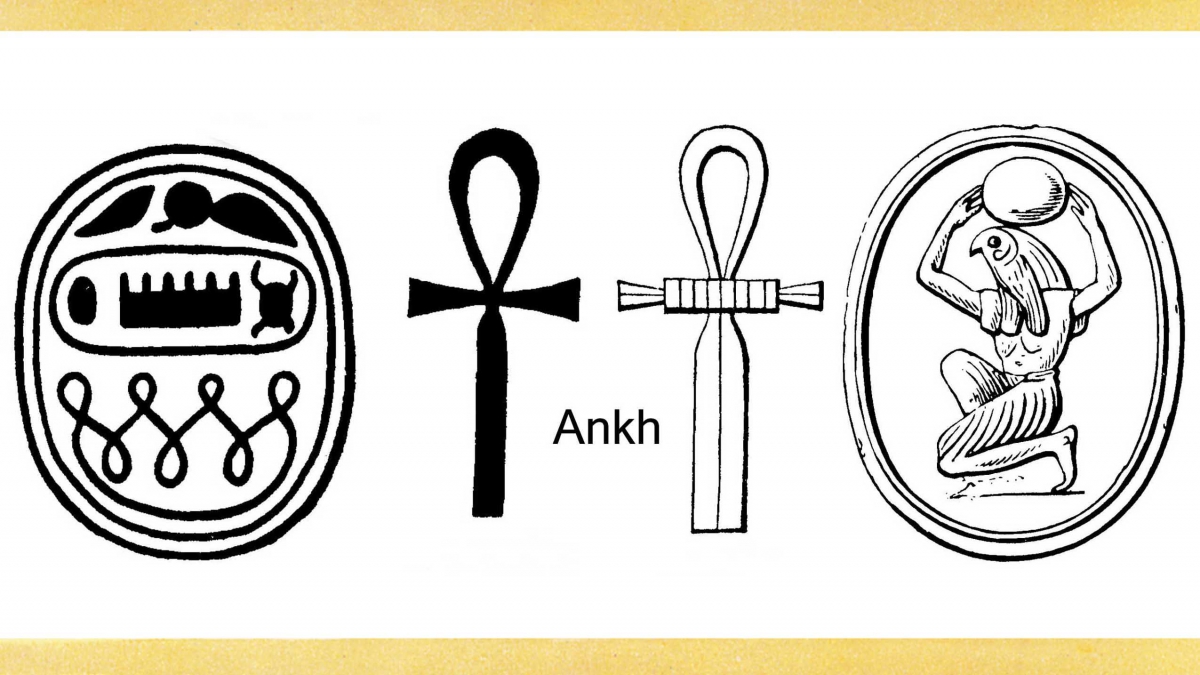Amulets
Amulets are very much like lucky charms. They are personal ornaments, worn by the living, or placed on the bodies of the dead to bring the blessings of particular deities. Because of their shapes, or colours, or the materials of which they were made, amulets were believed to help to protect the wearer. Some were beautifully made of gold, others carefully carved from turquoise or carnelian. Many, however, were made of glazed composition, sometimes called faience, and so crudely and simply formed that it can be difficult to identify the object depicted.
During the Age of the Pyramids, many amulets were used in everyday jewellery. When a necklace of amulets is found in a burial, it is not always possible to know whether the amulets had been worn during life, or were specifically made for the dead.
Gods and goddesses could be recalled by animals associated with them. The goddesses Hathor and Neith were particular favorites. Neith, a warrior goddess, had an elaterid beetle with crossed arrows as her emblem. Hathor could be invoked by images of a cow with gracefully shaped horns. Women also wore images of frogs for fertility, and an upright hippopotamus, like the goddess Taweret, who later would be the patroness of pregnancy and childbirth. A hawk represented Horus. Were the images of lions and crocodiles for men? Did both sexes wear the wedjet eye, and the djed pillar? Stylized scarab beetles were worn as symbols of transformation and as emblems of the sun god. The most famous of all Egyptian symbols, the ankh was worn, a symbol of life.

Some amulets were in the form of animal-headed humans, such as Anubis. The kneeling god, Heh, holds a palm rib in each hand. He was the symbol for a million, or a very great number and represented the wish for eternal life.
The amulets recovered from graves and townsites enable us to recognize that most of the gods and goddesses who would be important for all of ancient Egyptian history, were present from the beginning, and received popular devotion.
